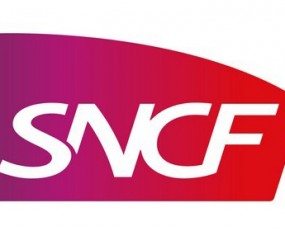
The full-year results of French rail owner and operator SNCF Group were a decidedly mixed bag.
They showed a 5% rise in revenues to €31.4bn, excluding currency adjustments, but impairment charges weighed on its bottom line, yielding a net economic loss of €2.2bn.
Meanwhile, profit before impairment stood at €377m, up 180% year-on-year. Both passenger and freight traffic rose, and so did heavy investment. In this context, digital innovation is perceived by the group as being a very important tool to “enhance performance and growth”.
For so long an opaque state-owned enterprise that has served social function as much as an economic one, the company’s financial statements reflected the new corporate structure of the group, following last year’s creation of a new entity – SNCF Reseau – which was conceived following the Rail Reform Act in mid-2014.
The rail operator now includes the high-margin SNCF Reseau division, which manages and maintains the national rail network, and SNCF Mobilities. The latter unit consolidates Voyagers, Logistics, and Keolis, and is in charge of its various transport businesses.
“SNCF’s assets, and in particular its railway network and high-speed trainsets, were revalued at the end of 2015,” it said, adding that the “technical adjustments” in book values was necessary and reflects the new competitive environment in which its Mobilites division operates.
The group argued that booking the impairment of TGV trainsets was “all more necessary” given low inflation, increased multimodal competition, and unremittingly high – and rising – track access fees. The move also “acknowledged an aggressive new pricing at Mobilites”.
SNCF Reseau generated EBITDA of €2bn, recording an EBITDA margin of 31.1%, but free cash flow (FcF) was negative to the tune of €2.9bn (versus €2.4bn of EBITDA, an 8.2% EBITDA margin, and a €179m FcF for SNCF Mobilites).
Consolidated EBITDA at group level dropped to €4.4bn from €4.6bn, while the EBITDA margin was mildly lower year-on-year.
SNCF said it would speed up investment in 2016, with funding from “all sources” reaching €9bn. It expects to hire over 10,000 employees this year, with the majority of them in the domestic rail business.
Guidance is for revenue growth at 2% on a constant currency basis, and its OHL purchase, the US logistics firm, is expected to contribute to that growth rate. OHL has a decent footprint in the US, and was acquired for $800m by Geodis, SNFC’s supply chain and forwarding arm.
It is also targeting €750m of productivity gains this year, including “a cross-functional plan at group level, a performance plan for SNCF Reseau, and an operational and commercial plan for SNCF Mobilites.”
As a result of these actions, EBITDA “should remain steady”, it concluded.
Source: Transport Intelligence, 23rd March 2016
Author: Alessandro Pasetti